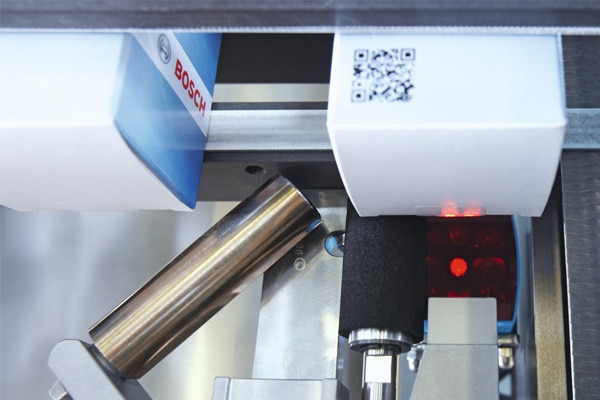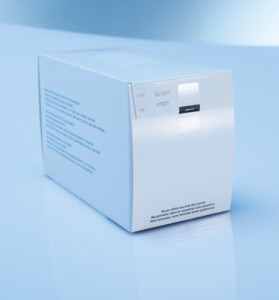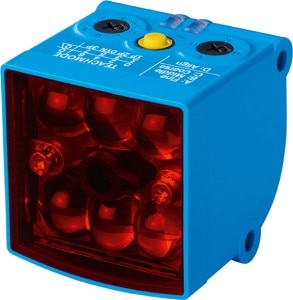The Glare by SICK is offering bright prospects in the battle against falsification and tampering in the field of medicinal product packaging. The innovative glare sensor was developed in response to the aims of the Packaging - Tamper verification features for medicinal product packaging standard. Bosch Packaging Technology is successfully using the Glare in its CPS serialization solutions and is achieving high reliability in detecting transparent tamper-evident safety labels, which are applied by machine.

Falsified medicinal products are a global problem. Popular medicines and highly priced medicines are at particular risk. Experts estimate that more than one in ten preparations worldwide are falsified; for medications available online, the level is believed to be over 50%. Studies suggest that buyers who wish to remain anonymous when making purchases via the Internet could even expect a falsification rate of up to 95% - based on of all of the products that are available on the web.
Tamper evidence: Transparent labels show when folding cartons have been opened
Standard EN 16679:2014 is a supplement to the Falsified Medicines Directive (FMD) 2011/62/EU. This enhancement of the standard will ensure the genuineness and verifiability of individual packs, and thus prevent falsified or adulterated medication and lifestyle preparations from entering legitimate distribution channels. EN 16679:2014 recommends a range of sealing options that would prevent packs from being opened and closed again without leaving evidence, and would guarantee maximum protection against tampering. Alongside fiber-tear labels, which are irreversibly damaged on opening, and foil 'VOID' stickers that reveal previously invisible text or patterns once they are detached, tamper-evident safety features have proved themselves effective in practice. These are transparent, self-adhesive sealing labels with perforations across the opening flaps of folding cartons, explains Daniel Sanwald, product manager at Bosch Packaging Technology.

As a form of protection against prior opening, transparent seals neither affect the pack design nor cover up the required wording or markings on the packaging. The damage to the perforation when first opened, however - i.e., the broken edge that results from opening - is instantly visible. As an element of our CPS folding box printing and verification systems, we are offering a tamper-evident function as an optional module that can very easily be retrofitted to existing packaging and serialization solutions, says Sanwald. For most packs, there are two label dispensers that attach the safety labels to the two opening flaps. In order to identify errors in dispensing or attaching the labels immediately, reliable detection of the applied labels was essential.
Glare - when glare characteristics make the difference

Although glare is a property which often interferes with the function of sensors, for the Glare it is an advantageous characteristic of the object or surface that can be enormously useful. Delta-S-Technology facilitates reliable detection. The Glare has a sensing distance of 50 mm and features two receiver fields and eight transmitter axes. The red-light LEDs transmit in various directions and create a light spot size of approximately 10 mm x 13 mm. This arrangement renders the sensor invulnerable to vibrations during machine operation and to any wobbling of the objects as they pass the sensor, thus ensuring reliable detection of glare changes between label and pack. For us as machine engineers, it is also important that the Glare should not require time-consuming configuration, or need additional illumination or protection against ambient light, says Sanwald, referring to the ease with which the glare sensor can be integrated into a system. During operation, the Glare distinguishes between directional and diffuse reflections, using an intelligent algorithm to evaluate the received signal in terms of its spatial distribution. By simultaneously observing the dynamic transitions between glare states, the Glare also achieves good signal quality.
IO-Link: The efficient option
The Glare can optionally be integrated into the machine controller via IO-Link. This allows the sensor to be adjusted via the controller and a wide range of process data can be supplied during operation; this data can then be processed for specific purposes in the PLC or on the user interface. As required in a pharma environment, the configuration data is stored centrally in the machine controller. It can be transferred to the sensor when switching to a different pack or when changing devices. In addition, the Glare will send an error message to the operator when it encounters contamination such as dust on the pack.
- Product information: Glare
- More information: Bosch Packaging Technology

